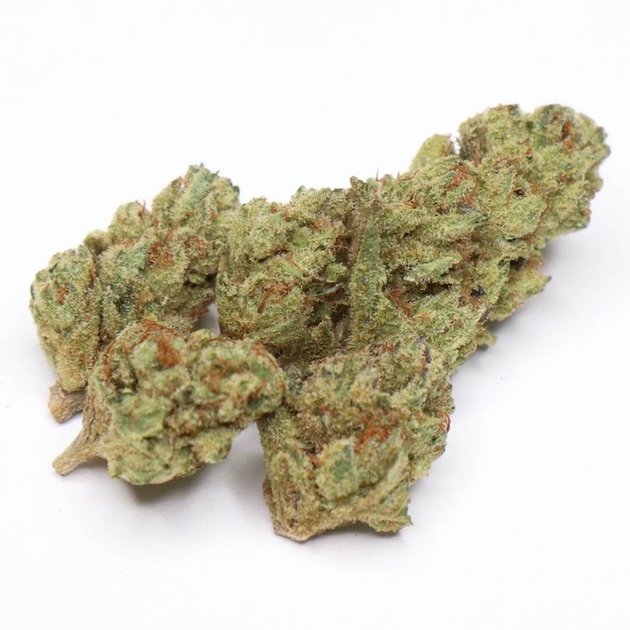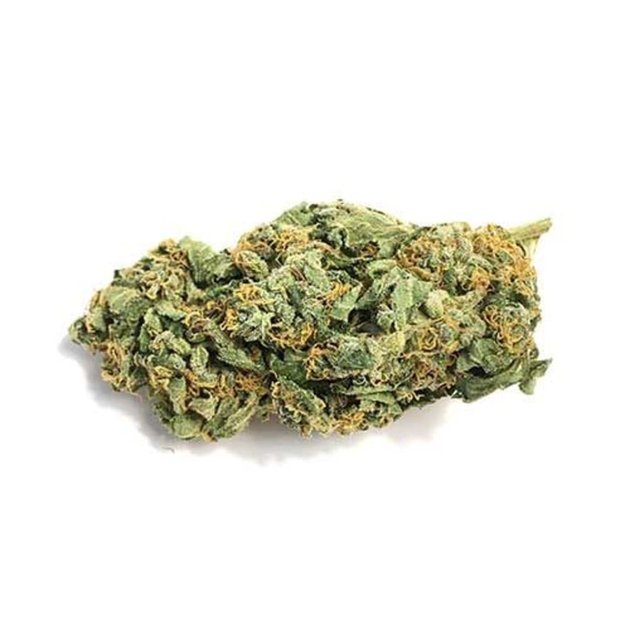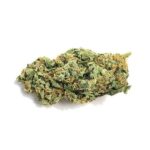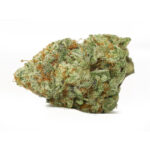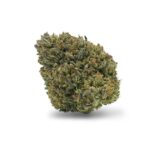Summary
In this read, we will be divulging all you need to know about cannabis flower – specifically CBD flowers/buds. We will be running through the anatomy of CBD buds, the cannabis cultivation process; all the different and most popular strains of CBD flower; the pros and cons and the legal particularities of CBD flower, among other important tips about CBD.
Introduction
According to Springer’s 1980 book “Marihuana: The First Twelve Thousand Years”, cannabis is known to be one of the oldest crops cultivated by humankind. At the beginning of the 20th century, cannabis finally reached Mexico, where it began to gain popularity throughout US markets. Today, approximately 158.8 million people around the world use cannabis, the United Nations estimated in 2020. This figure equates to more than 3.8% of the planet’s population.
Today’s known cannabis belongs to the genus Cannabis, in the family Cannabaceae. The taxonomic status of this genus is still controversial.
Cannabaceae is made up of subspecies, such as cannabis Sativa L., cannabis Indica and cannabis Ruderalis. Each of the cannabis strain types contains hundreds of specialised metabolites like cannabinoids, flavonoids and terpenes, observed in female inflorescences.
The most widely known cannabis subspecies making up the Cannabaceae family are Sativa and Indica. Let’s briefly get acquainted with their fundamental anatomical differences.
Sativa vs Indica

Cannabis is predominantly dioecious. In other words, the plant species is part of a minority that produces both male and female plants. There are also hermaphrodite cannabis variants, which bear both male and female organs in different parts of the plant. That cannabis is dioecious is not only a highly unique trait for a plant species, but it is also advantageous to cannabis growers, as it allows them to prevent the flowers from being fertilised and going to seed, which results in better quality flowers, called sinsemilla.
Anatomy of Cannabis Buds
The actual cannabis flower is a complex structure that comprises several different parts.
Calyx
The Calyx, also known as the bract, is an organ that protects the flower’s reproductive organs. They look like green teardrop-shaped leaves, which are densely packed with resin glands, producing the highest concentrations of cannabinoids than any other part of the plant.
The Calyx varies in different cannabis strains. For instance, in Sativa, they group into clusters that are not compact enough, whereas, in the case of Indica strain, calyxes are tiny, resulting in hard, tight clusters.
Cola
The cola refers to a cluster of buds growing close together, which form a flower cluster. The main cola, or apical bud, is located at the very top of the main stem and is usually distinctive in its large size.
Smaller colas grow from nodes found on the lower branches. Not all colas mature simultaneously because the apical bud, positioned at the top of the plant, benefits from greater light exposure – hence it grows faster.
Pistils and Stigmas
The pistils, commonly known as the hairs, are the female reproductive organ of the plant, containing the ovary and style- an extension of the ovary.
Bright, strand-like calyx pistils are called stigma. The stigma are needed to collect pollen released by male plants. At the initial stage, the stigma is white, and during maturation, it gradually darkens to yellow, orange, red, then browns. Their key role is to reproduce, but you can also determine the maturity of the buds from them. The strength and taste of flowers do not depend on the stigma.

Trichomes
In spite of their microscopic size, it is difficult to miss the crystal resin blanket on the buds. It is secreted through the transparent, mushroom-shaped glands on the stems, leaves and cups. Initially, trichomes appeared to protect the bushes from diseases and pests. These clear onion bulbs are rich in aromatic oils called terpenes, as well as cannabinoids such as THC and CBD.
The manufacturing of hash directly relates to these trichomes and the amount of their sugar-like resin. The effects of cannabis depend primarily on the maturation stage of the trichomes. Experts can easily tell whether the plant is ready to harvest just by observing the trichome’s colour. If the trichome is still transparent, it means that cannabinoid production is still in progress. If the trichomes are of an amber colour, this indicates the presence of terpenes, the phytochemicals that are responsible for the flavour and aroma of cannabis.
Cultivation of cannabis plants
The cannabis market now has several different variations of cannabis on offer. Cannabinoids have become commodities in their own right, like CBD oil.
That said, traditional bud smoking is still a hugely popular way to get cannabis into your system. Let’s take a glance over the cultivation process of cannabis flower (also called buds).

Germination
Germination is the process in which a new plant begins to grow from a seed. This is the first stage in the cultivation process, and it usually takes around 1-2 weeks. This is just about enough time for germinated plant seeds to turn dark brown and hard- ready for the next stage.
Seedling
Germinated seeds should be placed into some kind of growing medium such as rock wool or peat pellets. In this phase of the cultivation process, the cannabis plant becomes a seedling, whereby it develops more of the traditional cannabis fan leaves. The seed will initially produce leaves with only one blade. Eventually, the leaves will develop more blades, with 3, then 5, then 7, and so on.
A mature cannabis plant will have between 5 to 7 blades per leaf, but some plants may have more. At the seedling stage, the plant requires a lot of light, water (but not too much), and an optimum temperature of 20-25 degrees, with minimal moisture in the atmosphere.
Vegetation
At 2-8 weeks, the distinction between a male and female species can be made. It is essential to separate plants based on gender in order to avoid the female species producing seeds instead of trichomes.
Fixed conditions should be applied to achieve thriving vegetation – fresh water, a consistent, sustained temperature, constant light (sunlight and fluorescent light) and nitrogen nutrition. This phase marks a turning point in the cultivation process; the plant’s roots and foliage are rapidly developing, and the plant may need to be moved into a larger pot to accommodate this.

Flowering
Slightly increasing the temperature and reducing the plant’s light exposure will be favourable during this period. The flowering stage takes a long time (6-8 weeks), so it is essential to keep the nutrient amount under control. Nitrogen levels are to be decreased, while phosphorus levels should be increased. Fertilisers can also be added to facilitate bud formation.
Harvesting
In this stage of the cultivation process, buds are finally ready to be trimmed and dried.
Harvesting is done when 70-90% of pistils are browned for the maximum effect and taste. The stigma (hair-like strands that cover the buds) will turn from white to orange and will start to curl. The trichomes will turn from clear to opaque and then to amber.
Of course, this summary of the cannabis cultivation stages provides only a rough outline, and much more detail can be found elsewhere from other sources. We do not encourage the growth of cannabis unless you have a full, valid licence to do so.
CBD and THC
Among the 113 identified cannabinoids found in the cannabis plant, THC (delta-9-tetrahydrocannabinol) and CBD (cannabidiol) are the two most abundant. These two cannabinoids have similar molecular structures; however, their effects are noticeably different. While CBD offers a non-intoxicating, relaxing and pain-dulling effect, THC triggers a psychotropic high. CBD has shown a positive impact on a range of ailments – including epilepsy symptoms, feelings of anxiety, insomnia, both inflammatory and neuropathic pain, as well as so many others. Cannabidiol has been shown to interact with both our 5-HT1A (a subtype of serotonin receptor) and TRPV1 receptors (involved in the modulation of pain), hence how it may manage to alleviate pain and balance our moods. Muller et al.’s 2018 review asserts, “CBD may have therapeutic potential against inflammatory and chronic pain” due to its activation of TRPV1. The team of researchers continued, “CBD and cannabigerol (…) have been shown to be the most potent at TRPV1” of all the cannabinoids.
THC is a powerful psychoactive agent, which (unlike CBD, which exerts its actions indirectly) binds itself to the Endocannabinoid System’s CB1 and CB2 receptors. By doing so, THC has a profound effect on your mind, inducing euphoric effects and affecting things like your reaction time. Interestingly, CBD is thought to counteract the psychoactive effects of THC, according to a 2013 review by Niesink and van Laar, published by Frontiers in Psychiatry. Another study, conducted on rodents by the University of Western Ontario and published in the Journal of Neuroscience, declared that CBD could block the psychiatric side-effects caused by THC by impeding its overstimulation of the ERK pathway in the hippocampus.
Despite its more contentious reputation and vehemently controlled legal status, THC does have some therapeutic uses. Thus far, there are few medications containing cannabis available in the UK. Nabilone is one, containing synthetic forms of THC (so, not real THC as it is found in cannabis, but man-made compounds designed to mimic this cannabinoid’s action). This is available for prescription use in the UK and is sometimes prescribed for nausea and vomiting in patients receiving chemotherapy or to those suffering from severe neuropathic pain. Nabiximols (Sativex, containing a mix of CBD and THC) can be prescribed for MS patients to reduce spasticity and pain. Epidiolex is another cannabis-based medication available in the UK and beyond; this is made of pure cannabidiol and is given to those with severe forms of treatment-resistant epilepsy.
Interestingly, several studies investigating THC have observed that it can have an appetite-enhancing effect, such as one by Kirkham in 2009. Studies have found THC to be a successful appetite stimulant among AIDS and HIV patients, as well as in patients with eating disorders. One report published in the International Journal of Geriatric Psychiatry pointed to the uses of THC for weight-gaining purposes in 15 patients with Alzheimer’s disease who had been refusing food.
There is a myriad of preliminary studies that demonstrate the positive effects and indisputable potential of cannabis products, though research needs to continue before cannabis can be fully embraced and adopted by mainstream medicine.
Side effects of CBD
CBD is well-tolerated in the body, even in large doses. The WHO’s 2018 report states that any side effects from CBD use are likely to occur because of drug-on-drug interactions between CBD and medications you may be taking.
Other potential adverse effects you may want to look out for include the following:
- Nausea
- Lightheadedness
- Drowsiness
- Fatigue
- Diarrhoea
- Changes in appetite
- Changes in weight
If you are concerned about the possibility of reactions or you are encountering a reaction, contact your doctor.
The Food Standards Agency (FSA) encourages people to be careful when taking any CBD products, advising no more than 70mg per day. The FSA recommends that the following groups avoid CBD:
- People who are already taking any medications
- Pregnant and breastfeeding women

Cannabis flower smoking
Smoking cannabis flower can be done with the help of a pipe or bong, joint or by blunt rolling.
The act of inhaling the bud, with its high bioavailability, means that the expected result will be fast-acting. The effect depends on the dosage and on individual factors, like a person’s tolerance.
Most people who are accustomed to cannabis smoking culture will be familiar with the practice of rolling a joint. The only tools you need are rolling paper, a grinder and flowers. Special paper for rolling is available in most stores and inexpensive to purchase.
Somewhat less common, blunt rolling works according to the same principle as a joint. It is an emptied cigar wrap that is filled with cannabis flowers and sealed towards the end of the cigar. Again, all necessary tools are sold in most convenience stores. However, the main downside of a blunt is the amount of tobacco consumption to which your body is subjected. The tobacco lies within the cigar wrapper.
For all the old souls out there, pipe smoking is a popular retro option and very straightforward. No water or power is needed to simply crush a bud; fill the bowl with the crushed buds and light it up.
Another way to smoke cannabis flower is with the help of a special water pipe called a “bong”. With a bong, you don’t need to break the flower down as much before packing your bong, so it saves time and papers. A bong is a filtration device consisting of a chamber partially filled with water and a stem that unites the water chamber and holds a bowl where the cannabis flower is held. The liquid in the chamber helps to clean out the smoke from unnecessary particles, making the smoke less harsh on your throat. As the smoke goes through the bong, the chamber cools it before it reaches the mouthpiece. Nowadays, you can find bongs of various shapes and sizes, consisting of different materials like glass, ceramics, acryl and even plastic. Some are made up of more complex filtration and cooling components than others.
Bear in mind that the cannabis flower doesn’t have a conventional dosage structure. Depending on the result you are trying to achieve, it is crucial to know the total concentration of cannabinoids in flower. The ratio of CBD: THC in a cannabis strain can predict the outcome when it is consumed. Here at Alphagreen, our focus and interest is with CBD-rich flowers only, rather than THC-rich flowers.
What are the six most popular CBD strains?
Charlotte’s Web
Named after the groundbreaking story of Charlotte Figi, the young girl in the US who used medical marijuana to help manage a rare form of epilepsy that resulted in frequent seizures, the Charlotte’s Web strain was the first high-CBD product that helped to break down the misconceptions about cannabis.
This story, and the media coverage surrounding it, sparked a great deal of mainstream interest in cannabis. This strain is considered to be a variation of hemp, as it contains 17% CBD and a minuscule concentration of THC.
The strain’s dominant terpenes (organic aromatic compounds found in oils of all cannabis flowers) are bisabolol, caryophyllene, and beta-myrcene, which, in total, give Charlotte’s Web flower a sweet taste and wood-like odour.
Harlequin
This CBD-rich strain is a hybrid progeny of Swiss Sativa, Thai Sativa, Nepali Indica and Colombian Gold. It consists of a 5:2 CBD to THC ratio, which makes Harlequin the ideal candidate to alleviate the symptoms associated with a number of physical and psychological conditions.
Terpenes found in the Harlequin strain are myrcene, a-pinene, b-caryophyllene, giving this strain a particularly pleasant smell of citrus and mango.
Cannatonic
This is another hybrid strain and was created by the Spanish genetics company Resin Seeds. Cannatonic is a cross between MK Ultra and G13 Gaze. According to Spannabis, an annual cannabis event, in 2008, Cannatonic was a record-breaker in terms of its high CBD concentration.
About half of Cannantonic plants tested have shown a 1:1 ratio between CBD and THC; however, some plants may hold up to 17% CBD and under 6% THC. Some of the terpenes included are myrcene, limonene, and b-caryophyllene, producing an earthy, fruity aroma and taste.
ACDC
This high CBD strain is a cross between Cannatonic and Ruderalis. The exceptionally high 20:1 CBD to THC ratio makes ACDC potentially one of the safest CBD buds out there and excellent for addressing symptoms such as muscle spasms, migraines and nausea. The main terpenes found in ACDC are a-pinene, b-pinene, and b-caryophyllene, which gives it a herbaceous flavour.
Harle-Tsu
This hybrid of Harlequin male and Sour Tsunami boasts a 20:1 CBD-to-THC ratio. It, therefore, comes as no surprise that Harle-Tsu was awarded first place for the best CBD flower at the 2014 Emerald Cup. Harle-Tsu samples yield about 18% of CBD on average, whereas some can produce 21.05% CBD and 0.86% THC. Thus, Harle-Tsu can be consumed without any concern of becoming intoxicated.
Usage of Harle-Tsu is said to elicit a relaxing sensation. The terpenes it possesses include myrcene (which is said to have soporific effects), humulene, pinene, ocimene and terpinolene. This array of terpenes, combined with the high CBD content, can bring on various therapeutic benefits, which makes this strain deserving of further study.
Ringo’s Gift
A high-CBD cross between ACDC and Harle-Tsu. There are a few different phenotypes of this strain with various CBD: THC ratios, some of which may offer a 1:1 proportion of CBD: THC or even a 25:1 ratio. For this reason, it has become a popular hybrid strain in the cannabis clubs of Barcelona. Its effects may include full-body relaxation, among others.
This strain’s combination of a-pinene, myrcene, and caryophyllene produces a piney and minty scent.

Smoking buds: the pros and cons
Pros
One pro of smoking CBD buds is their high bioavailability. Due to the fast absorption and the fact that the CBD retains a good amount of its potency, inhaling CBD is a great way to get the cannabinoids found in CBD flowers straight into the bloodstream. As you may or may not know, the lungs are connected to the brain by large, fast-flowing blood vessels. This makes the lungs a powerful delivery system when it comes to inhaling CBD flowers. The CBD flower action may last around 30-60 minutes or longer, and the effects of CBD flowers may be stronger than you expect.
Enjoying a potent dose of non-intoxicating CBD won’t make you feel paranoia or confusion. CBD might bring you a mild feeling of drowsiness, but other than that, your first experience with hemp flowers should be altogether enjoyable.
An additional advantage to smoking CBD flowers is that it may help you combat a smoking addiction. Studies, such as those carried out by Morgan et al. (2013) and Hindocha et al. (2018), have shown that cannabidiol can reduce tobacco consumption in heavy smokers and reduce smoking-related cues or triggers. Morgan’s study concluded that CBD significantly reduced the number of cigarettes smoked by 40% and that in the follow-up, these results were somewhat maintained. These studies evidence that CBD warrants further research as a potential remedy for nicotine addiction.
Smoking CBD flowers may promote an overall feeling of relaxation and calm. Studies by Blessing et al. (2015) and Wright et al. (2020) have centred on cannabidiol’s potential to stabilise our moods and reduce anxiety by signalling our mood-affecting neurochemicals.
Cons
There are some cons to smoking CBD flowers, but these are essentially the adverse reactions we discussed earlier. For the potential adverse reactions that could be caused by CBD intake, see our above section on side effects.
One con of smoking with CBD flowers is that it may be advisable to avoid driving afterwards. This is not because it is illegal to drive after CBD consumption, but because CBD might induce drowsiness or fatigue, in which case, it is never a good idea to drive.
A further disadvantage of smoking CBD flowers is that it should be avoided by those who suffer from liver problems, as well as by those on medication(s) unless they have been given approval by a medical professional.
You may feel slightly nauseous after smoking CBD flowers, especially if you use them excessively. If you encounter this side effect, try lowering your dose of CBD or using it less.
Lastly, smoking CBD flowers is not as discrete or straightforward a delivery method as other CBD delivery methods are. Unlike taking a CBD capsule, chewing a gummy, administering drops of CBD oil, or pumping a CBD spray, smoking CBD flowers requires more equipment, a little more time, and once it’s rolled, you will need to go outside as you would with a regular cigarette. In summary, smoking CBD flowers may not be the most practical way to use CBD.

Is CBD flower legal?
Cannabis laws are steeped in contradiction and grey areas, and this tends to result in a lot of confusion. Certain manufacturers even take advantage of this society-wide confusion to sell products that are not compliant with cannabis laws, as people may buy goods under the misapprehension that they are legal.
Hemp buds look exactly like marijuana, which is unsurprising, given that they belong to the same plant family. Hemp plants are legal to grow in the UK under a government-issued license. Hemp flowers have a very low concentration of THC and usually a CBD concentration of approximately 5-15%. Still, as you may have noted from the lack of CBD flowers available on online CBD outlets, the sale of CBD flowers/buds in their raw form is prohibited, even if THC is below 0.2% and from EU-approved origin. That being said, enforcement of the laws surrounding CBD flower and bud has been relatively touch-and-go, considering its status as a controlled substance in the UK. Indeed, flowers and buds are sometimes sold as ‘tea’ and under other guises online, with claims of low and “legal” levels of THC. Despite the increasing availability of CBD flower and CBD bud in UK shops and online, these products are a controlled substance in the UK, nonetheless. We thus do not encourage purchasing CBD flower online if you live in the UK.
According to the Misuse of Drugs Act (MoDA) – a law first issued in 1971, to which a number of amendments have subsequently been made – cannabis is stated as an illegal plant to cultivate and distribute for personal use. In rough terms, the MoDA stipulates that cannabis-derived products are permitted so long as they contain no more than 0.2% THC and are not sold in their raw form but are infused into products.
Each European country and US state has its own unique laws surrounding CBD goods. They vary all over the world, hinging on aspects of cultivation, distribution, methods of use and purpose. For instance, if sold as a supplement, CBD products must have a proper label listing their content and ingredients.
Since February 2020, new CBD products on the market require a Novel Food application. The National Health Service (NHS) and the National Institute of Health and Care for Excellence (NICE) published a unique guideline for cannabis-based medicinal products that can be allowed by law. As mentioned previously, prohibitions do not apply to edible forms of the product, including:
- CBD oils
- CBD capsules
- CBD edibles, gummies and food supplements
- CBD-infused drinks
Also permitted are CBD infused vape juices and e-liquids, topicals, transdermal patches and suppositories. Essentially, as long as products adhere to cannabis laws, using them is no problem.
Hemp seeds are also allowed for commercial use, so long as they are infused into other products such as hemp seed oils. The rest of the plant, including the bud and flower, must be destroyed. On this basis, the bud and flower cannot be made for sale in shops. The flower and bud effectively fall under the generic term of “cannabis” and so fall in the scope of the Misuse of Drug Act, along with other controlled substances.
Hopefully, as we move towards a more cannabis-friendly and open-minded future, the negative connotations attached to this plant species will dissipate, laws will relax, and CBD regulations will be characterised by transparency and less riddled with contradiction.
Bottom Line
If we’ve done our job right, you’ll hopefully be better informed on CBD flower as you approach the end of this read. Remember to consider the law before deciding to use CBD in this format;
don’t do anything that could get you in trouble, and finally, purchase and use CBD responsibly!

Verified by a Healthcare Professional
Anastasiia Myronenko
Anastasiia Myronenko is a Medical Physicist actively practicing in one of the leading cancer centers in Kyiv, Ukraine. She received her master’s degree in Medical Physics at Karazin Kharkiv National University and completed Biological Physics internship at GSI Helmholtz Centre for Heavy Ion Research, Germany. Anastasiia Myronenko specializes in radiation therapy and is a fellow of Ukrainian Association of Medical Physicists.
Smoking CBD flower can be done in a few different ways: via a joint, a pipe, a bong, by rolling a blunt or with a vaping device. These methods require different tools and equipment, and their resulting smoke differs in purity and quality.
CBD flower contains odour-affecting chemicals known as terpenes. These are naturally-occurring in both the hemp and marijuana plants (cannabis Sativa). However, different strains of CBD flower will contain different terpenes, and as such, the strength of the smell will vary from strain to strain. Despite the differences in composition between CBD/Hemp flower and THC-rich marijuana, their smell may be relatively similar. The smell and taste tend to be described as “earthy” or “skunky”.
With CBD flower, there are both practical benefits and wellness benefits. In terms of its practical benefits, CBD flower has a high bioavailability, meaning the CBD will be potent in your body. This will result in stronger effects. Because of the lungs being a good delivery system for cannabinoids, another practical perk of CBD flower is that the onset of the effects will be pretty rapid. In terms of enhancing your wellness, CBD buds hold the potential to improve physical health and boost mental health via their stimulation of the endocannabinoid system.
This depends on where you are. In short, CBD flower is not legal throughout the UK as it constitutes raw cannabis under the Misuse of Drugs Act of 1971. This applies even when the CBD flower is within the legal limits of THC content. In other European countries and in parts of the US, CBD/hemp flower is legal to purchase and smoke.











